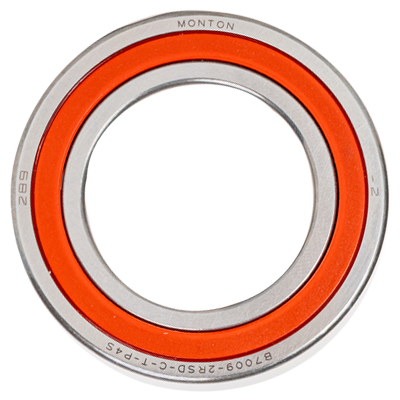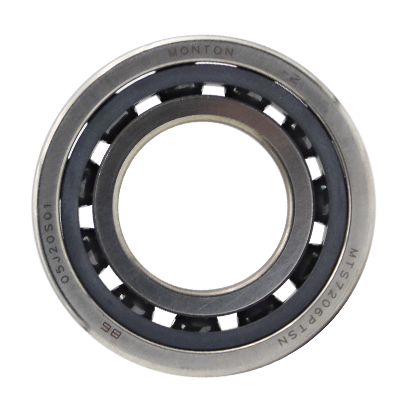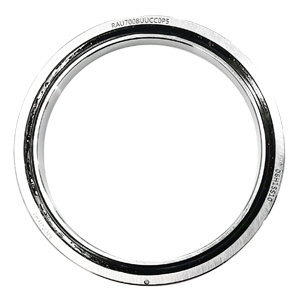Benefits of Bearing Remanufacturing
A 1,000 MW coal-fired power stationidentified six pulverizer roll wheel bearings that needed replacement before the pulverizer could return to service, a very real problem since the pulverizer was critical for maintaining peak power. Upon checking the lead-time for new bearings, the plant management realized that the schedule requirements could not be met. In the absence of a spare to serve as a backup, the pulverizer had to be brought back to its original specifications so the station could keep running without interruption until its next scheduled major outage.
Solution
After completing inspection and failure analysis, it was determined that the bearings, although damaged, could be restored. In fact, they were remanufactured in six weeks compared to seven months of lead time that a new bearing set required. In addition to the timely return to service, remanufacturing saved the plant almost $7,500 in bearing purchases and related costs, plus five months of potential reduced power production worth more than $1.2 million in lost revenue.
As this case illustrates, remanufacturing can often serve as a timely, practical and cost-effective alternative to replacing a failing or failed bearing.
Bearings in rotating equipment primarily serve to support shaft loads, reduce friction with rolling elements, and provide shaft location and system rigidity. While bearings are engineered to operate over a calculated service life, various adverse influences can jeopardize and prematurely shorten how long
a bearing actually will perform properly. Wear, rust, solid particle contaminants and sporadic metal-to-metal contact are among the typical culprits.
Sooner or later, material fatigue can be expected to occur, resulting from shear stress cyclically appearing immediately below the load-carrying surface of a bearing’s rings and rolling elements.
Over time, these stresses cause micro cracks underneath the surface, gradually extending to the surface itself. As a bearing’s rolling elements pass over the cracks, fragments of the material break away (known as “spalling”). This is usually the beginning of the end for a bearing.
Some operating environments present especially daunting challenges, exemplified by demanding applications such as those in the oil and gas industry. In the case of offshore drilling, for instance, moving into deeper and harsher environments exposes equipment and components to severe extremes in pressure, temperature, contamination and other especially punishing forces. As a result, bearings that ultimately bear the brunt may need to be replaced.
For whatever reason, when a bearing is on the road to failure or fails altogether, replacing the bearing is certainly an option. However, this standard approach can be an expensive proposition and may involve long, and unproductive, lead times for delivery. Instead of outright replacement, applying a controlled
remanufacturing process for the bearing and then returning the bearing to full service can be the most viable approach.
Underscoring the advantages, cost-benefit analysis has shown that significant cost savings can be realized by remanufacturing a bearing, depending on its size, complexity, condition, price and application needs. Ultimately, bearing remanufacturing can contribute to reduced total life cycle costs, fully exploited service life, cost savings, improved uptime from increased machine availability, reduced environmental impact in terms of less energy and less scrap, and enhanced asset reliability.
Rolling Out the Process
All rolling bearings are candidates for remanufacturing (although it may be economically unfeasible for very small sizes), and the nature and extent of remanufacturing processes will naturally depend on a particular bearing’s condition and application requirements. In general, during remanufacturing, relevant functional surfaces of the bearing will be repaired during remanufacturing, including the replacement of bearing components when necessary.
Among best practices, expert bearing analysts should always be enlisted for the job. They will be sufficiently equipped to evaluate the bearing and identify which remanufacturing approach will be the most efficient in restoring the bearing consistent with application requirements. Standard industry procedures and established criteria then will guide recommendations and remanufacturing work. Just as importantly, dedicated remanufacturing service centres represent a big plus. Some bearings may need more work than others. As a result, different remanufacturing processes have been formalized.
Inspection is always the first step, whether for used bearings or for bearings stored over a long period, and involves comparing them with drawing and/or specification requirements. This process typically includes cleaning, degreasing, disassembling the bearing, non-destructive testing, visual/microscopic inspection and dimensional inspection, followed by a detailed bearing analysis report offering recommendations for appropriate treatment and suitable remanufacturing attention. The type and severity of surface damage will define which remanufacturing process has to be applied.
In cases of minor damage, remanufacturing operations such as buffing and superficial polishing of inactive and active surfaces are done and completed by demagnetization, reassembly, dynamic testing, lubrication and preservation, and packaging for return to service.
For more significant damage, remanufacturing builds on activities performed for minor damage and extends to include one or more of the following: intensive polishing and/or grinding of surfaces; replacing rolling elements if necessary with new rolling elements with a diameter equal to the diameter of the elements previously contained in the bearing or with adapted oversize rollers diameter (if clearance requirements demand it); remanufacturing the bearing’s cage for the rolling elements or replacing it with an identical cage; and/or interchanging used components (such as seals, snap rings and others).
During such remanufacturing processes, appreciable material removal takes place, which removes superficial damage and modifies the stressed material volume.
For severe damage, remanufacturing can encompass the previous operations and include installing new rings and changing or substituting components to create a different assembly identity (in effect, modifying in order to improve performance or properties).
With such clearly defined procedures, bearings returned to service can meet (or sometimes even exceed) specified standards. After work is completed, final inspection and measurements, cleaning and preservation, service reporting and archiving of documentation should be performed.
Detecting Damage Early
Success in remanufacturing will turn on when the bearing is flagged for the process. In some particularly critical industries, it is common practice from a safety perspective to remove rolling bearings during scheduled maintenance or overhaul of equipment, regardless of the bearing’s condition, and then perform the remanufacturing and return the bearing to service.
Since this is not necessarily the case in all industries, when does a bearing become a legitimate candidate for remanufacturing? The correct timing for bearing removal and remanufacturing can be determined to achieve the optimum balance of a long service life and low operating costs.
Predictive maintenance strategies and associated condition monitoring technologies offer a big assist in detecting early defects and damage, which can signal the early need for intervention and resolution to extend bearing service life. Other related technologies, such as traditional vibration monitoring and lubrication analysis (detecting wear particles), also can be engaged, all in an effort to avoid catastrophic failure of a bearing and the increasingly intensive and costly remanufacturing required for totally failed bearings.
In short, bearing damage detected at the earliest possible stage can contribute to a timely and positive remanufacturing outcome at relatively minimal cost.


 English
English Russian
Russian Chinese
Chinese









